IN THE FIELDS OF DITTRICHIA VISCOSA
Every autumn, the vast meadows in the coastal area called Marlera get decorated with a multitude of lovely yellow flowers.
Those flowers belong to one of the plants that cover large stretches of Marlera. Its scientific name is Dittrichia viscosa. I don't know any common name of this plant in my language, but earlier today, I found out on the Internet that in English, Dittrichia viscosa is commonly known as the false yellowhead or sticky fleabane.
Dittrichia viscosa has plenty to offer so you can always find a nice variety of insects crawling, jumping, and flying around the plants in bloom. The Pieris brassicae butterfly shown in this photograph is enjoying the nectar of the flowers on the top of the plant.
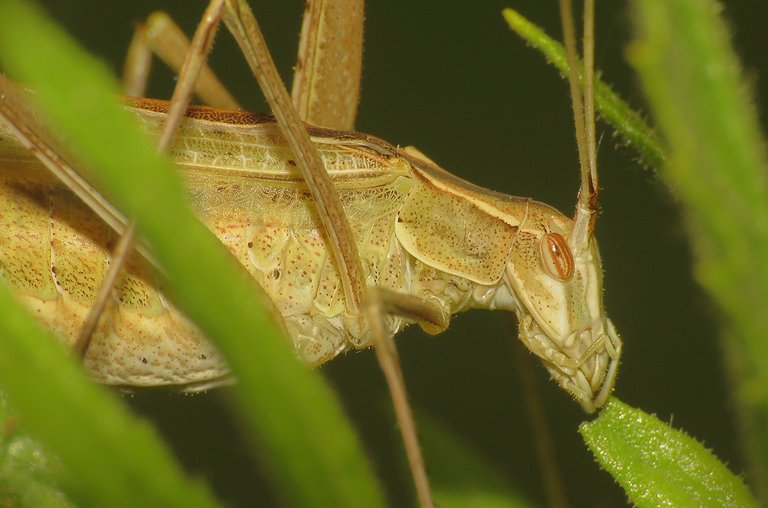
This bushcricket was photographed lower on the same plant ...
... where it was chewing one of the many sticky, aromatic leaves.
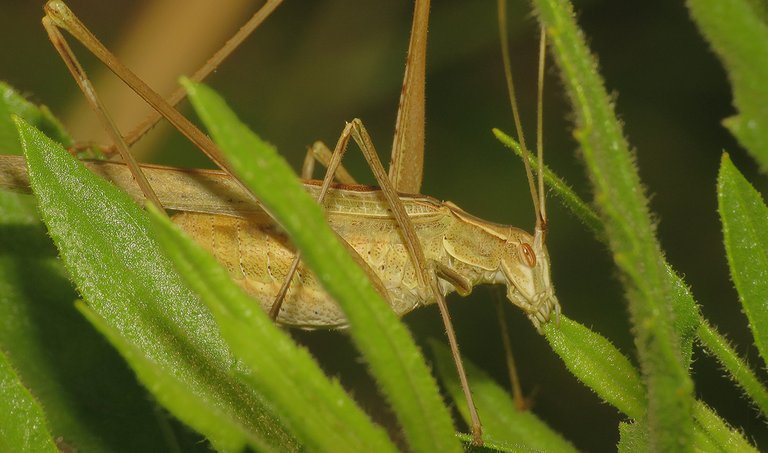
Tylopsis lilifolia is the name of this species from the Tettigoniidae family.
On the 15th of September 2021 ...
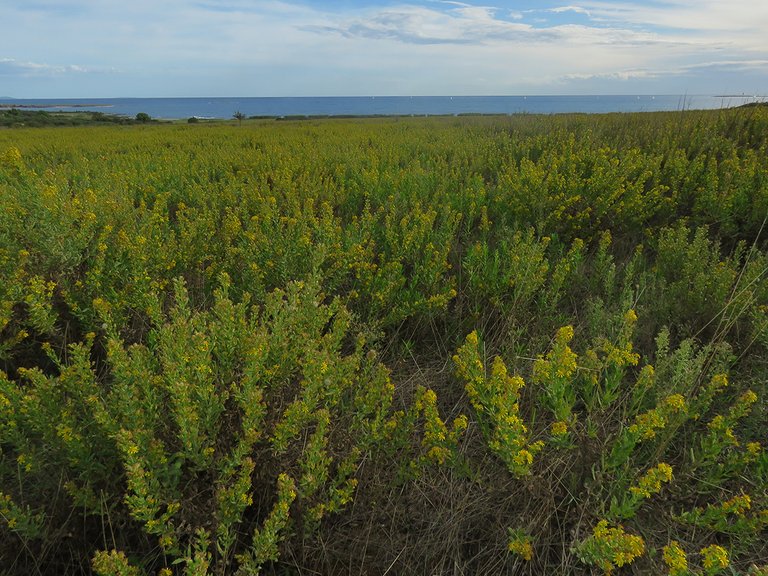
... while walking through the fields of Dittrichia viscosa like many times before ...
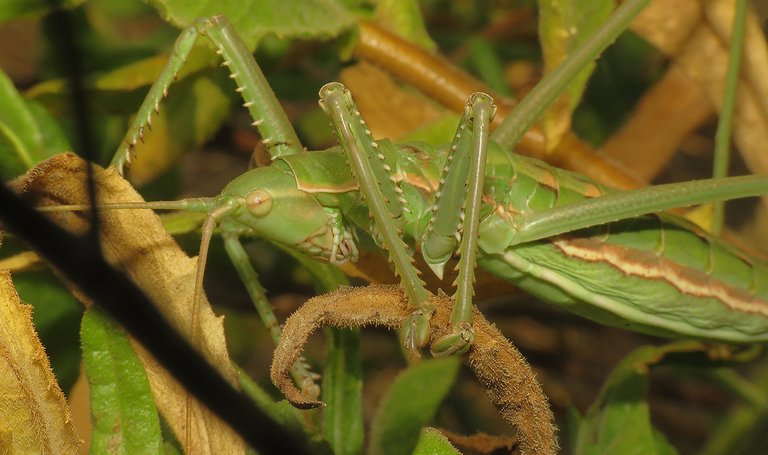
... I came across one spectacular rarity ...
... well hidden among the foliage.
This really massive bushcricket is the Saga pedo ...
... commonly known as the predatory bush cricket.
While many other bushcrickets supplement their omnivorous diet with other insects and their carcasses, the Saga pedo is a real predator.
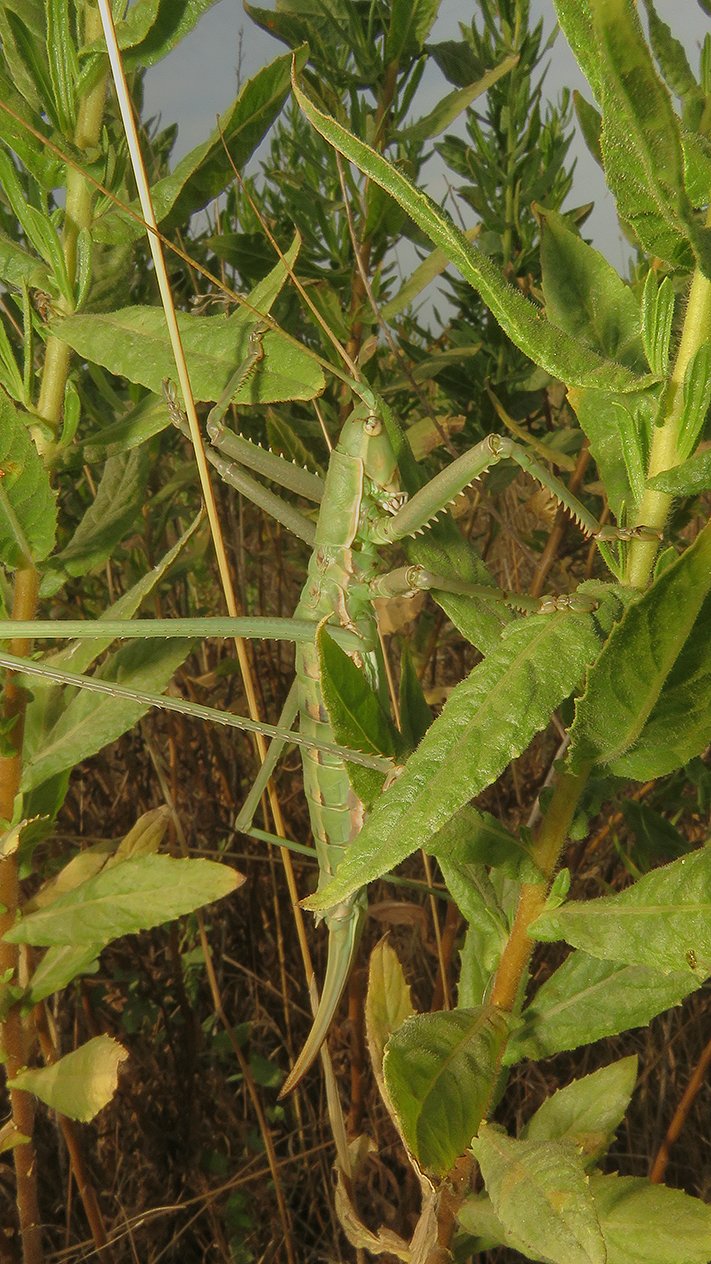
Its strong fore and mid legs are covered with spines, and the insect uses them to catch and hold firm the prey.
The prey is usually killed by biting into the throat and is soon decapitated.
The area inhabited by this unique member of the Tettigoniidae family is very wide, but in all the places, from the Mediterranean parts of Europe to China, the predatory bush cricket is always fairly uncommon and hard to see.

Here in my area, the Istra peninsula on the Croatian side of the northern Adriatic, this is definitively a rarity. I saw this insect only once. That's why I took many (or too many, maybe) photographs on that occasion, and I decided to include all of them in this post.
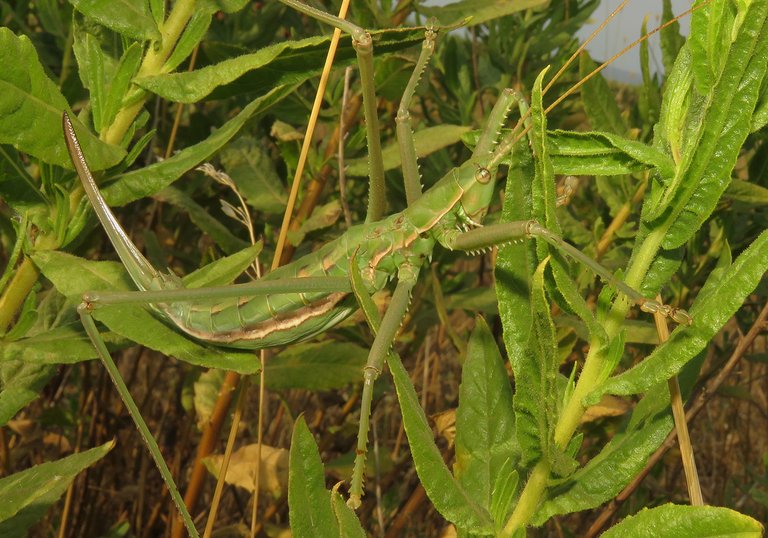
With its usual body length of ten to twelve centimeters, this is one of the biggest insects one can encounter in Europe. The strong and long legs covered with spikes make it look even bigger and give the predatory bush cricket an impressive and menacing appearance.
I find it very beautiful, of course.

As you surely noticed through this long, and slightly repetitive line of photographs, the predatory bush cricket is very well camouflaged among the leaves of Dittrichia viscosa.
Camouflage plays an important part in the hunting strategy of this species. It allows the Saga pedo to come close enough to the prey, and then leap and grab it with the long thorny legs.
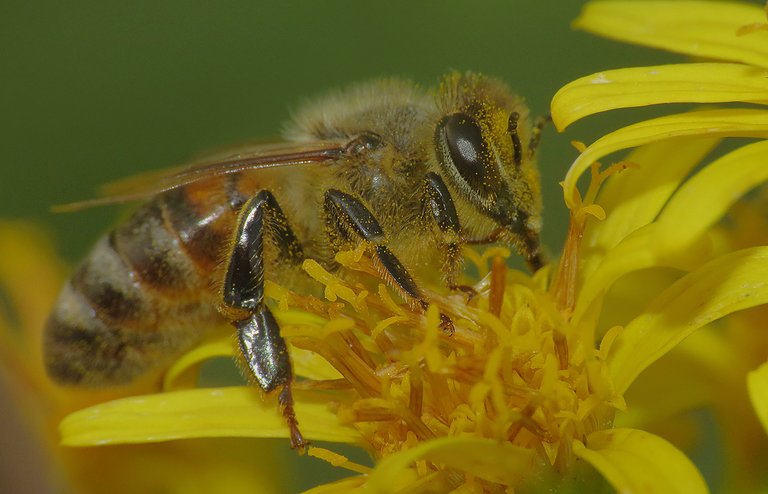
The honey bees (Apis mellifera) often visit these flowers in big numbers.
in September 2022, always in Marlera ...
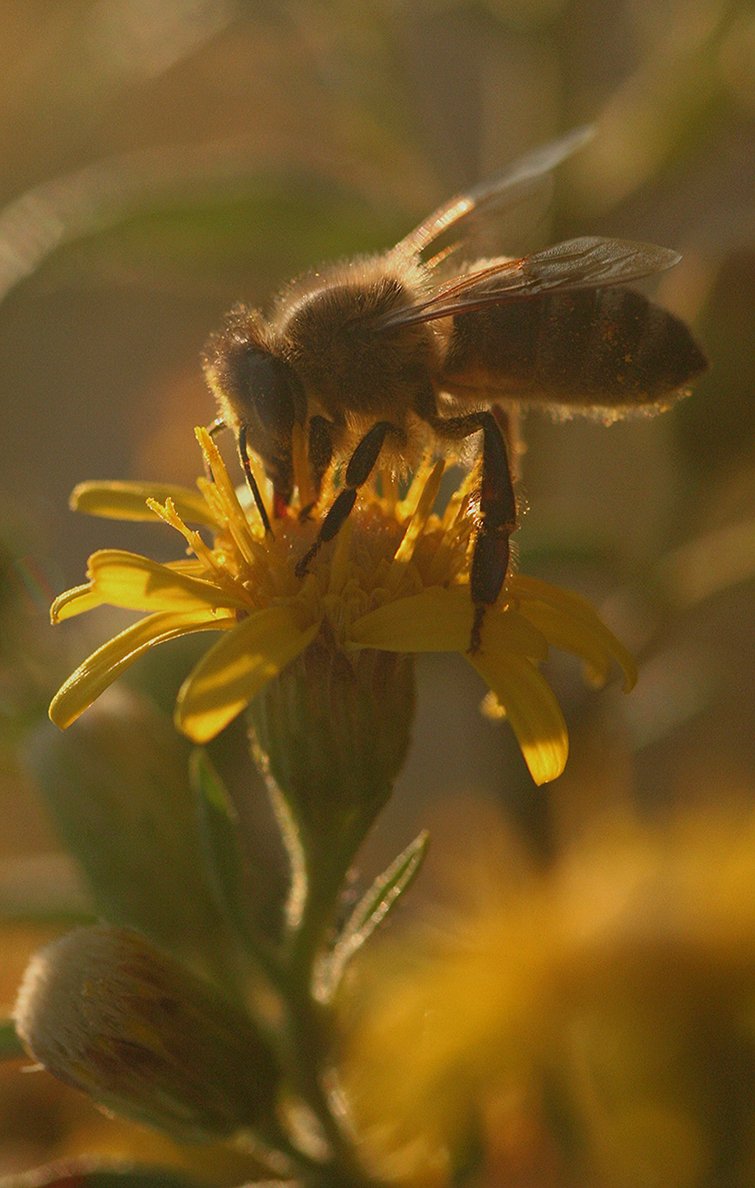
... I caught two of those bees with my camera, so you can see them collecting the nectar in this post.
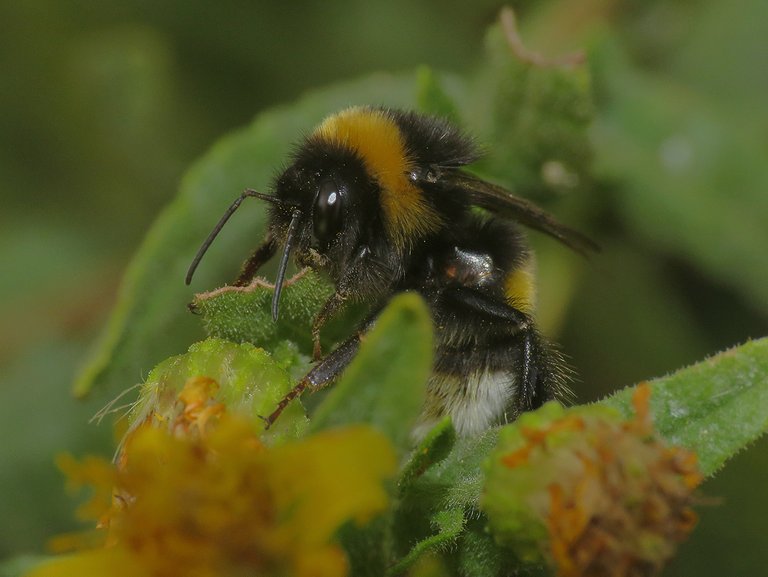
Here you can see a different kind of bee. It's a bumblebee. The scientific name of the species is Bombus terrestris.
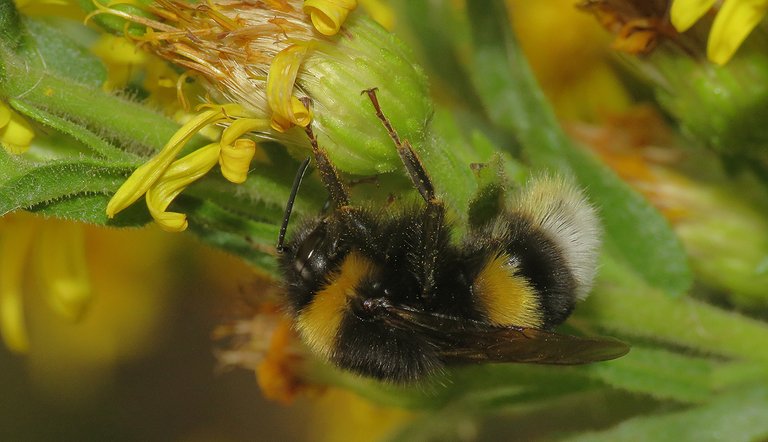
The bumblebee was photographed in October 2019, after sunset, so the insect wasn't active. It was ready to spend the night hidden in the dense growth of Dittrichia viscosa.
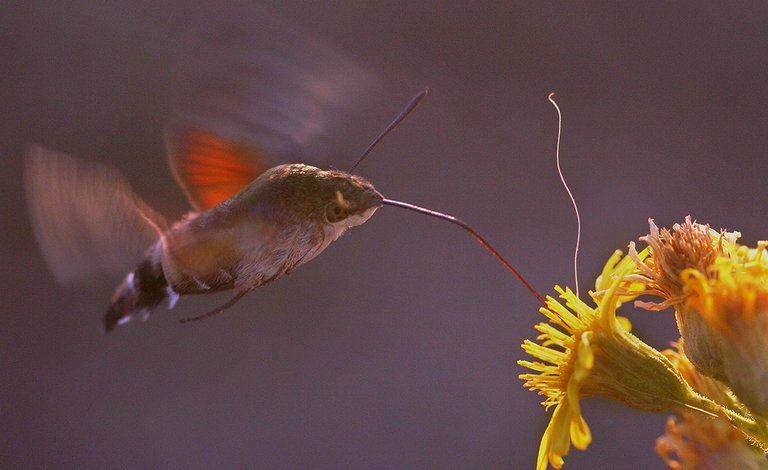
In this old photograph, taken on the 29th of September 2008, you can see a diurnal moth collecting nectar through its long proboscis. In the following shot from the same year ...
... another hummingbird hawk-moth is flying around the yellow flowers that produce plenty of nectar. Macroglossum stellatarum is the scientific name of the species.
On the 10th of October 2020 ...
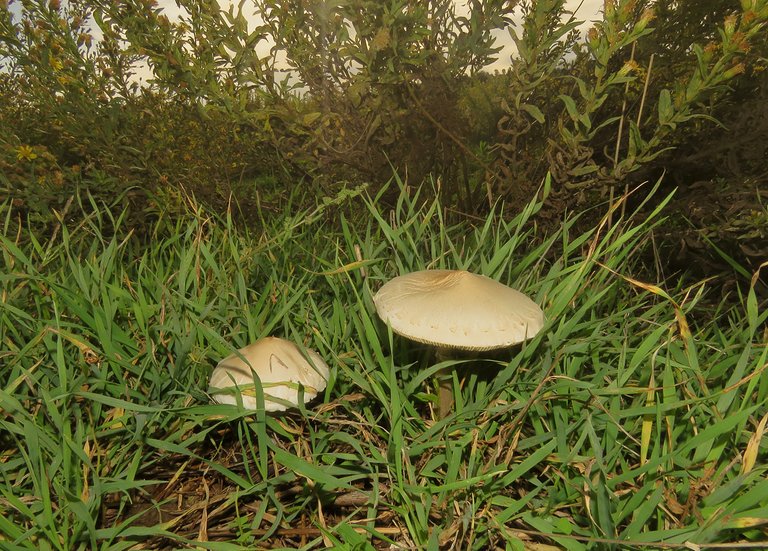
... I found a bunch of mushrooms in one of the fields covered with Dittrichia viscosa.
Can't tell you the name of the species or anything else about them. All I can do is show you how they look.
That same day in 2020 ...
... I photographed an interesting grasshopper ...
... on one of the fairly tall plants near the mushrooms.
This is the Locusta migratoria.
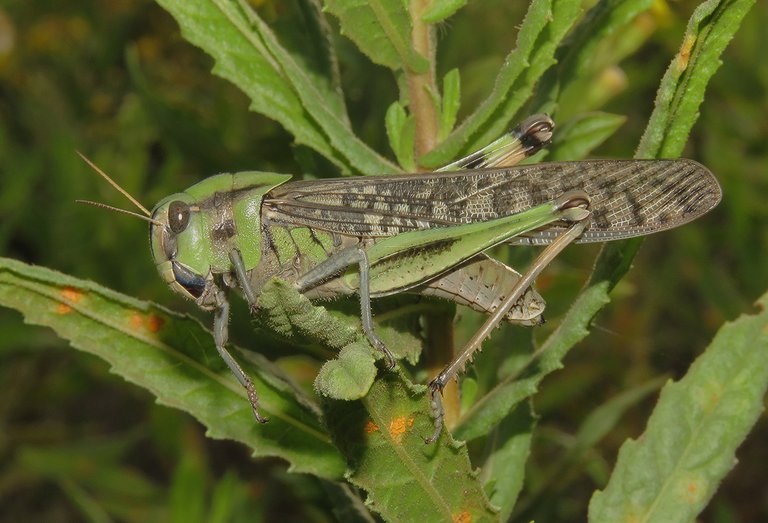
A completely developed adult of that pretty big species from the Acrididae family. In the following photograph ...
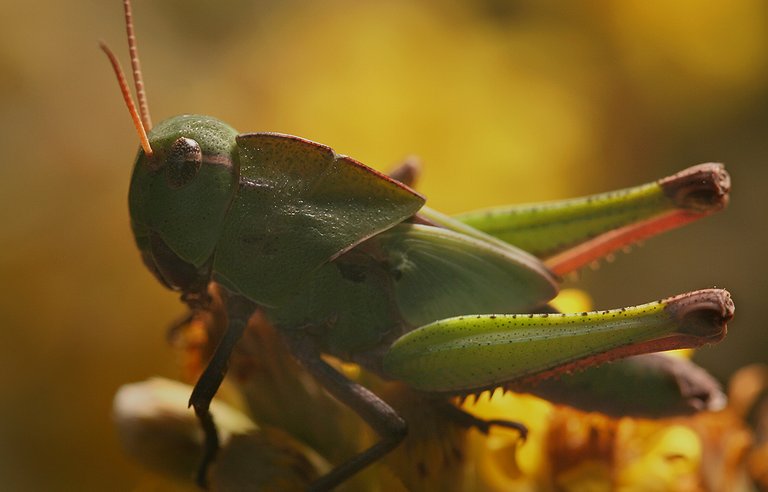
... you can see a nymph.
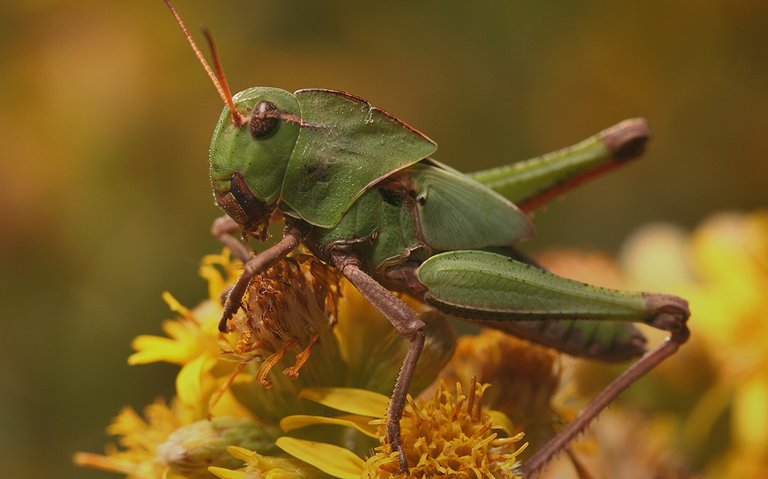
This young grasshopper with small, still useless wings, was photographed in the same area, two months earlier.
Here, the focus is again on the adult insect photographed in October.
This beautiful insect, photographed in 2010 ...
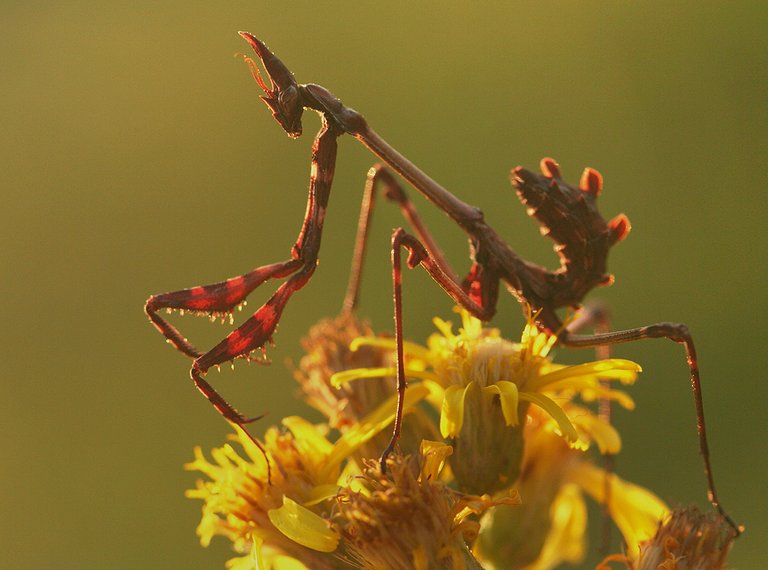
... is a young mantis. The Empusa pennata nymph.
Here you can take another look at the scenery, and then, in the following photograph ...
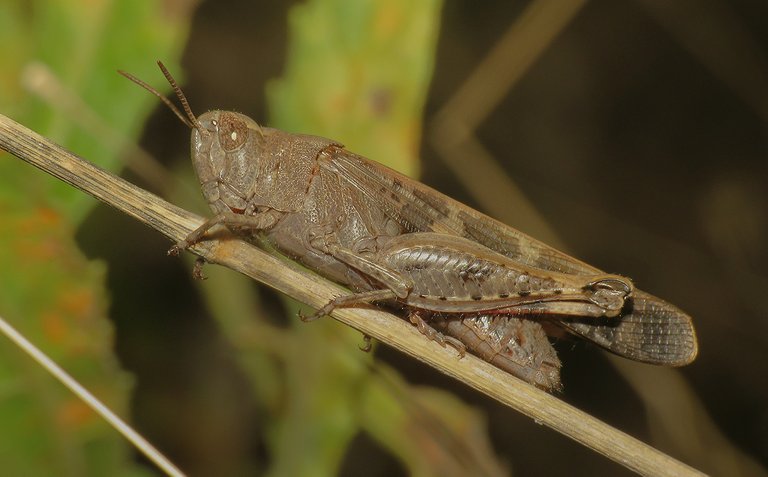
... I'll show you another grasshopper.
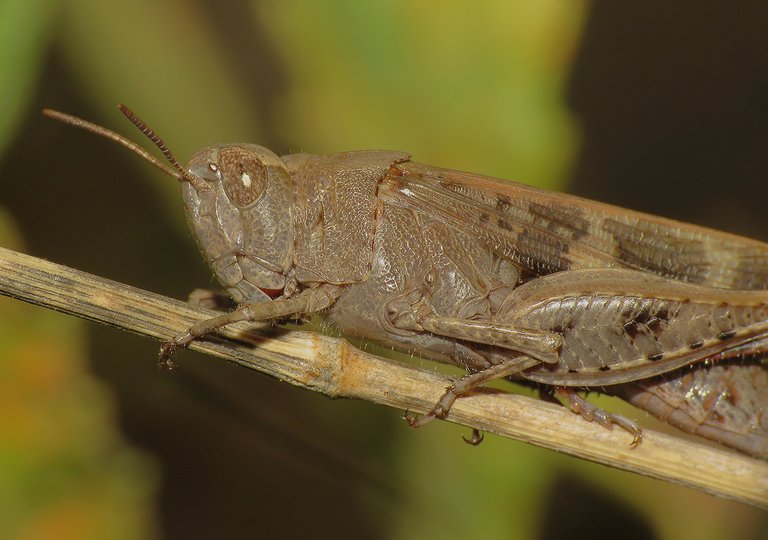
This Aiolopus strepens is much smaller than the Locusta migratoria.
On one occasion in 2009, while exploring the same area ...
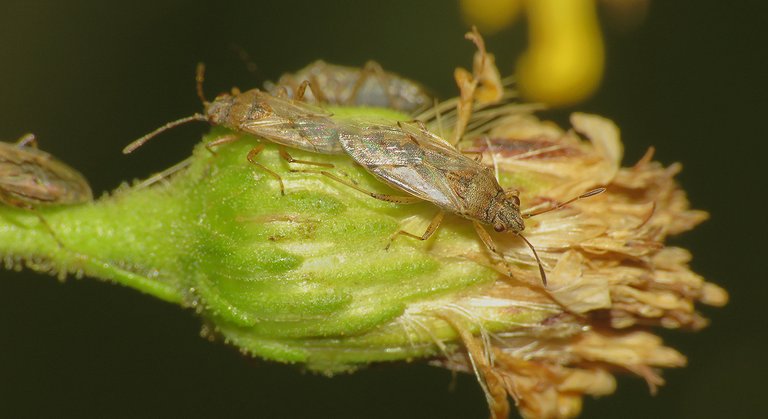
... I spent some time photographing a mating pair of very small bugs from the Lygaeidae family.

I didn't know the name of the species back then ...
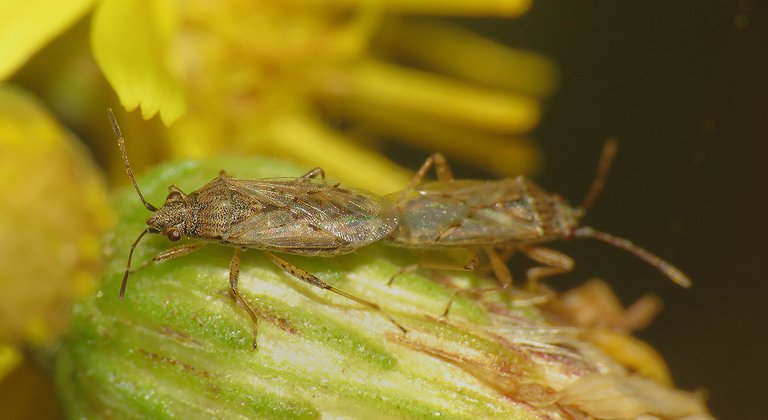
... but today, I can tell you that these are the Nysius senecionis seed bugs. In the following four photographs ...
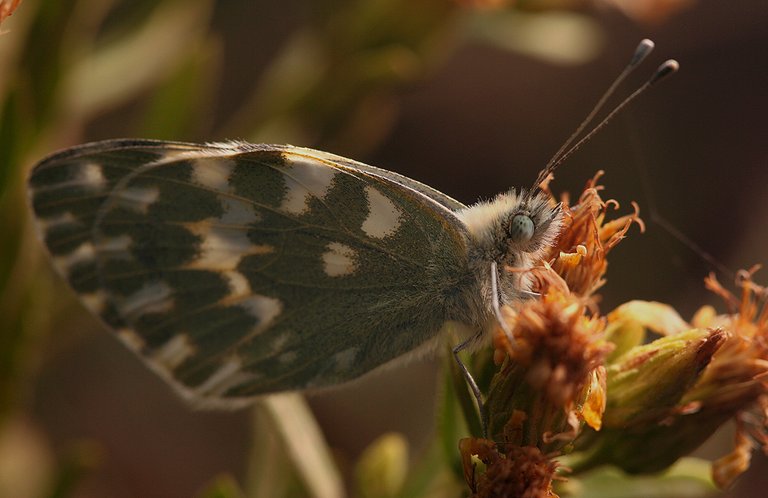
... I'll show you four more insects photographed among the flowers of Dittrichia viscosa. This is the Pontia edusa, a butterfly from the Pieridae family.
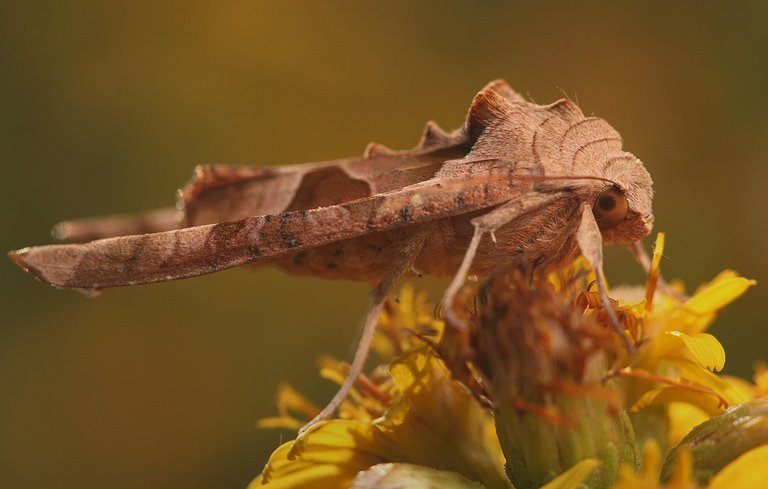
Here you can see a moth from the Noctuidae family. The name of the species is Phlogophora meticulosa.

This is a bushcricket. Decticus albifrons, commonly known as the Mediterranean wart biter. In the following photograph ...
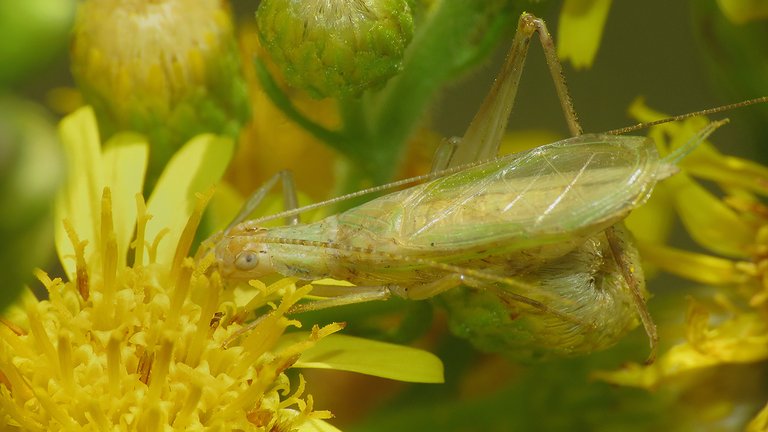
... you can see the Italian tree cricket (Oecanthus pellucens).
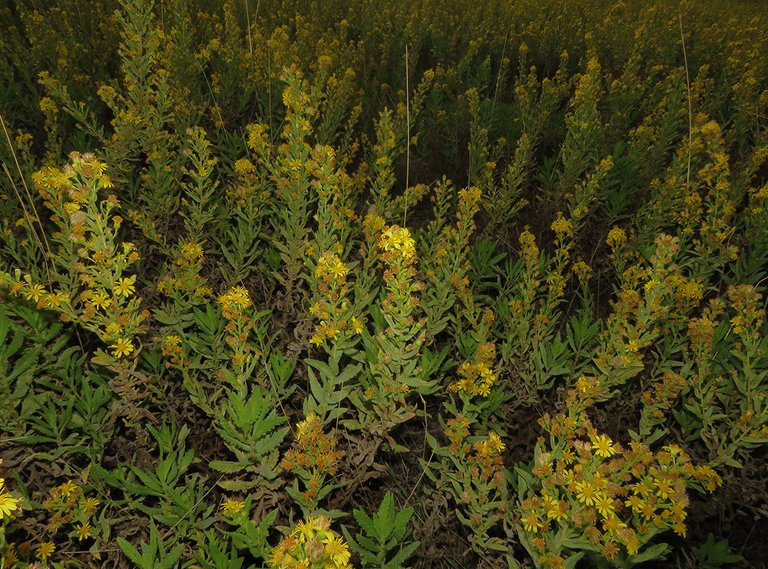
And that's it. The following links will take you to the sites with more information about the protagonists of this post. I found some stuff about them there.
https://en.wikipedia.org/wiki/Dittrichia_viscosa
https://en.wikipedia.org/wiki/Pieris_brassicae
https://en.wikipedia.org/wiki/Tylopsis_lilifolia
https://en.wikipedia.org/wiki/Saga_pedo
https://en.wikipedia.org/wiki/Western_honey_bee
https://en.wikipedia.org/wiki/Bombus_terrestris
https://en.wikipedia.org/wiki/Hummingbird_hawk-moth
https://en.wikipedia.org/wiki/Migratory_locust
https://en.wikipedia.org/wiki/Empusa_pennata
https://en.wikipedia.org/wiki/Aiolopus_strepens
https://www.gbif.org/species/4486367
https://en.wikipedia.org/wiki/Pontia_edusa
https://en.wikipedia.org/wiki/Angle_shades
https://en.wikipedia.org/wiki/Decticus_albifrons
https://en.wikipedia.org/wiki/Oecanthus_pellucens
AS ALWAYS HERE ON HIVE, THE PHOTOGRAPHS ARE MY WORK.



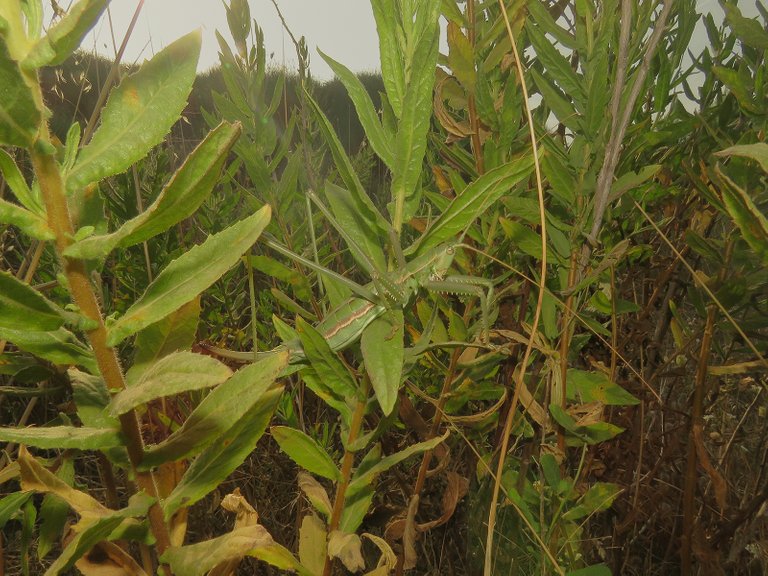
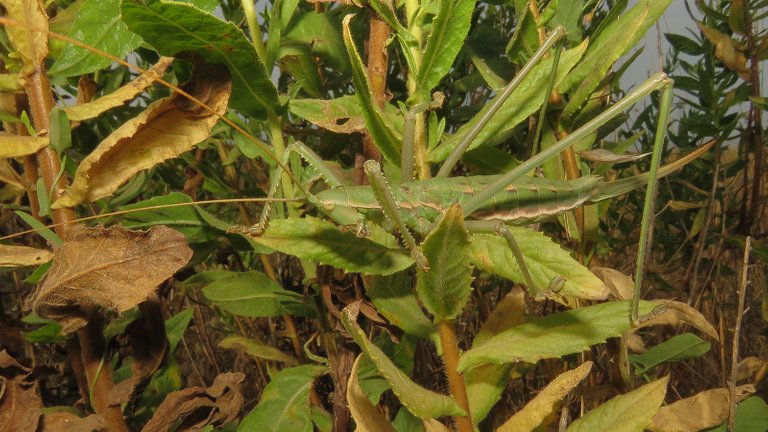
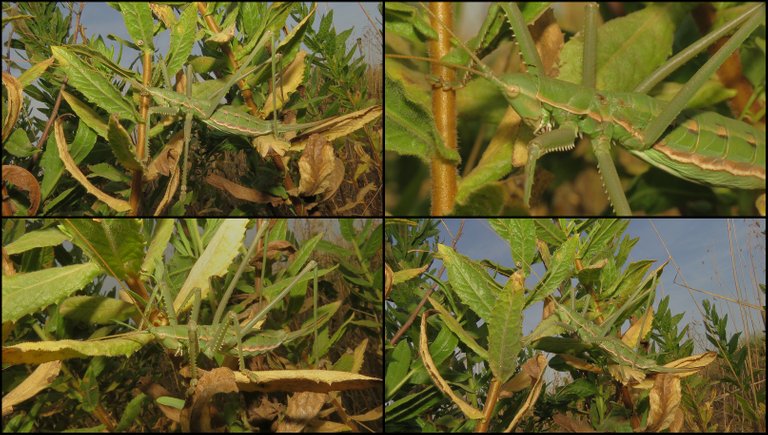
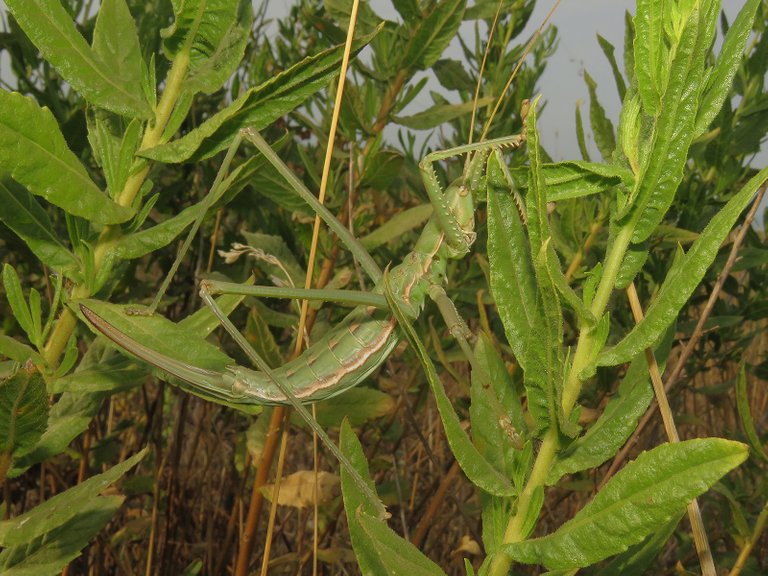
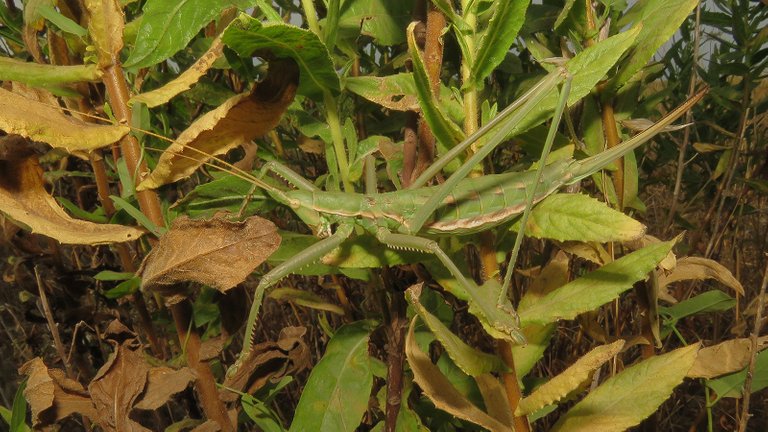
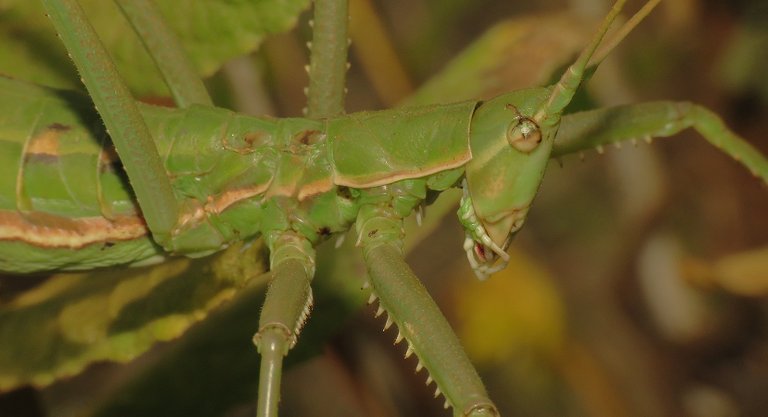
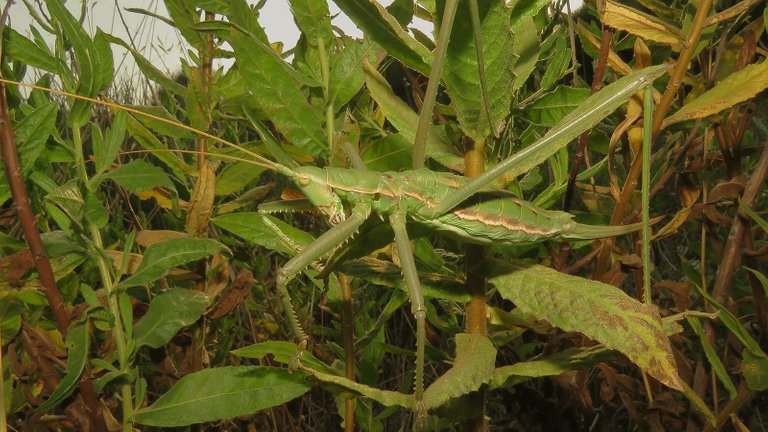
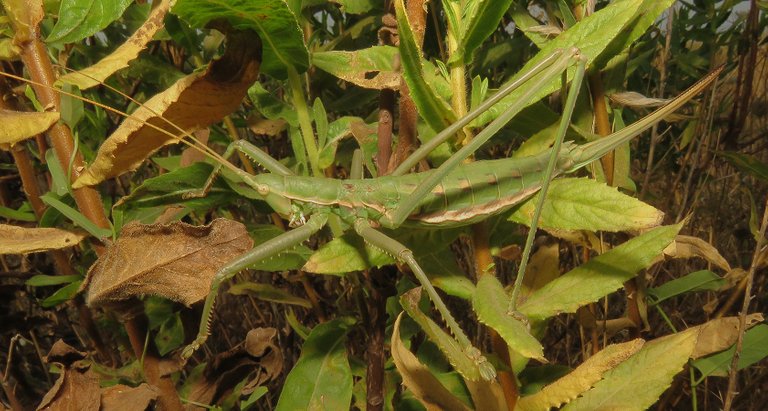
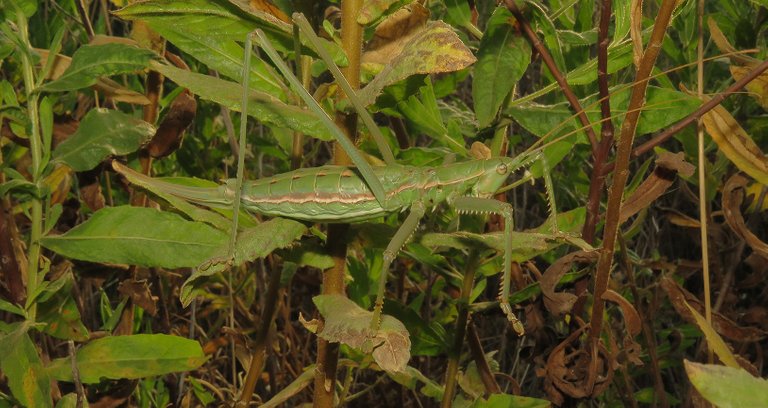
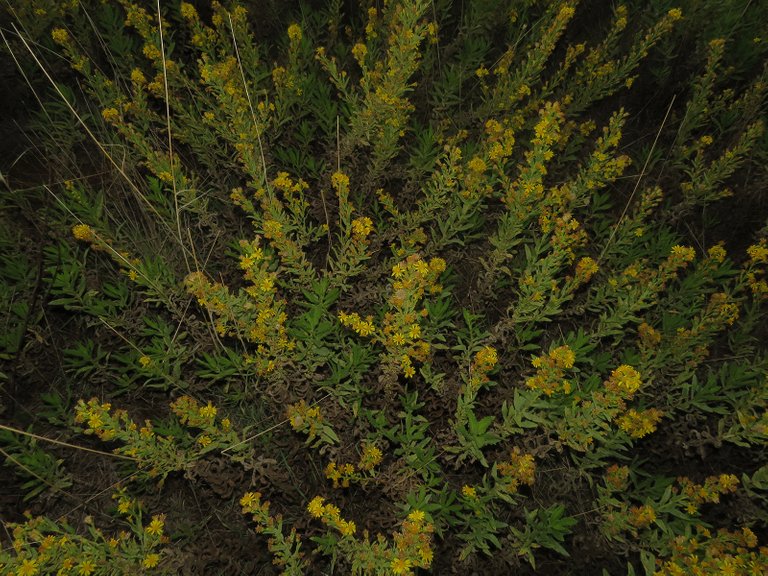
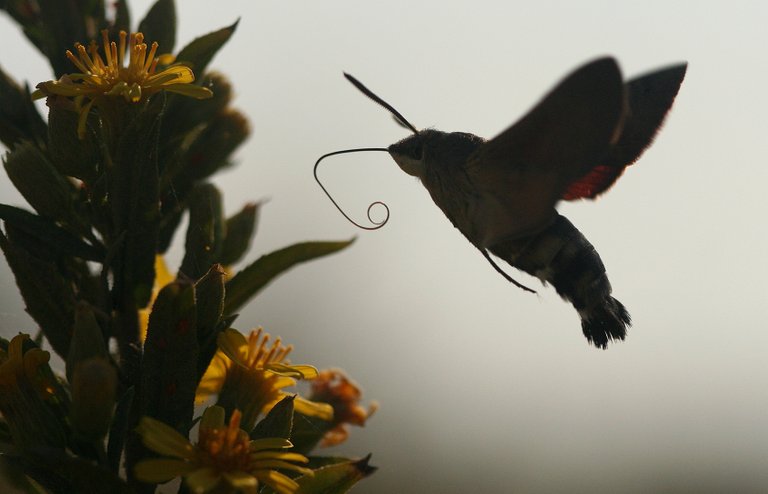
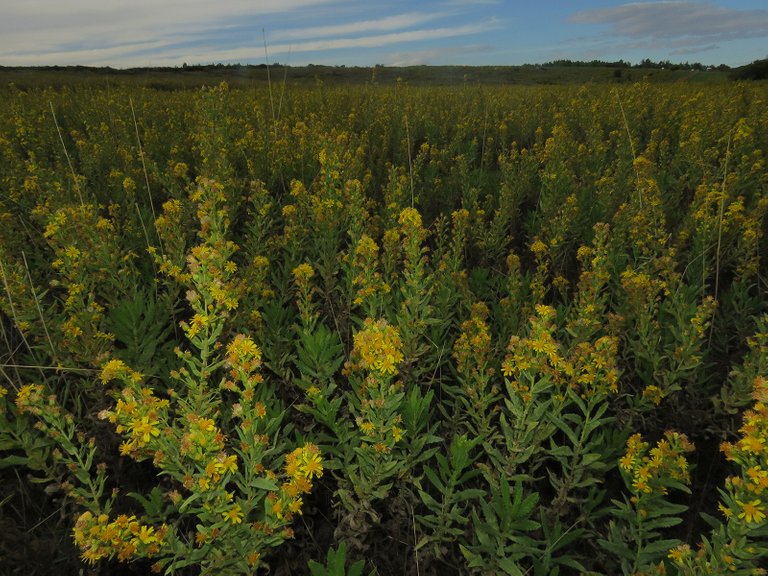
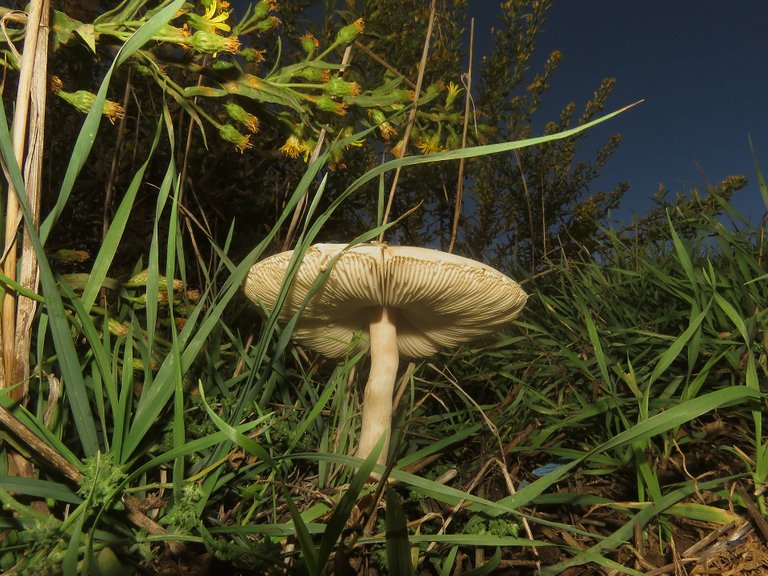
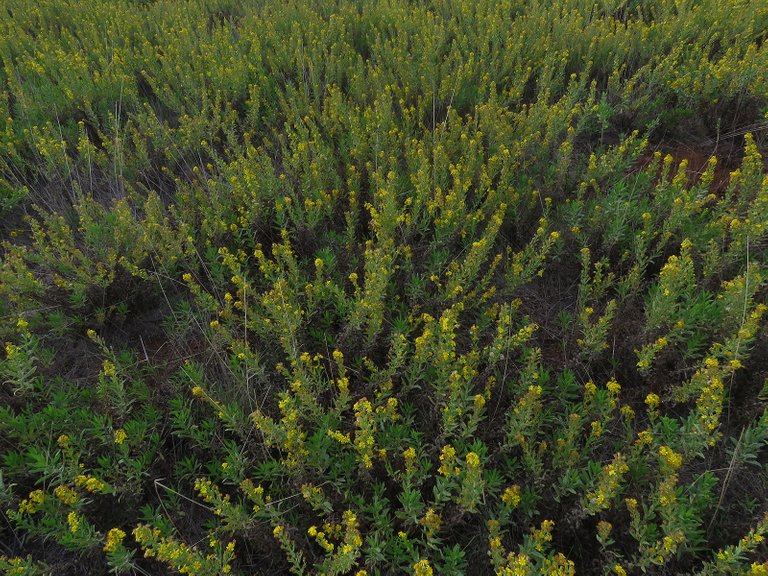
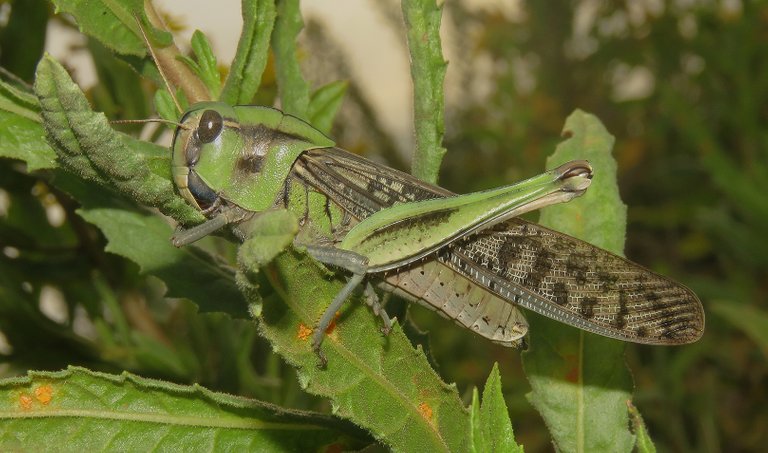
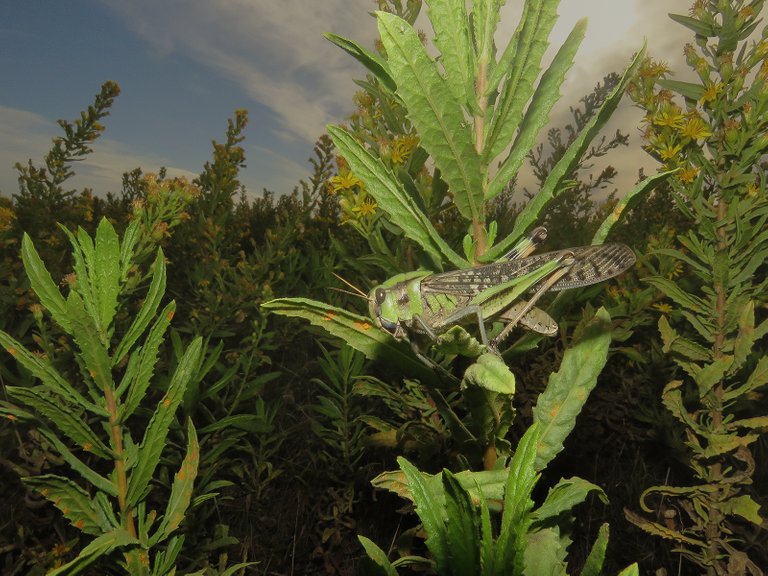
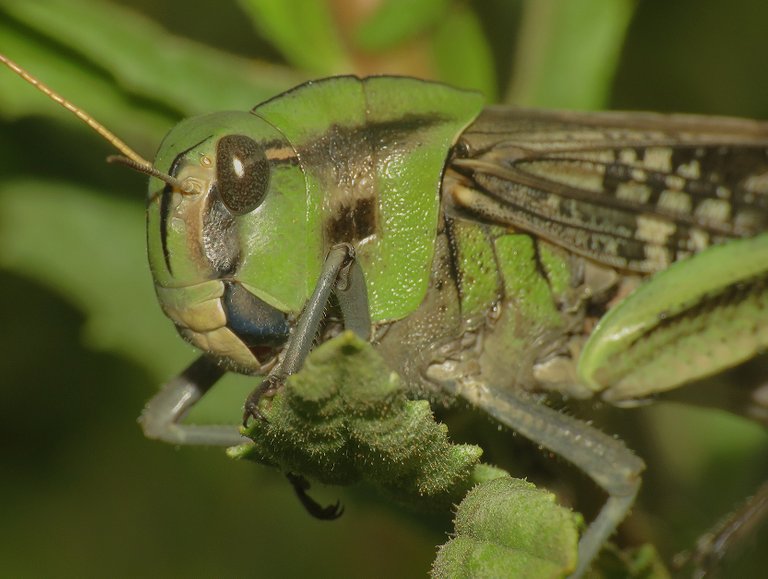
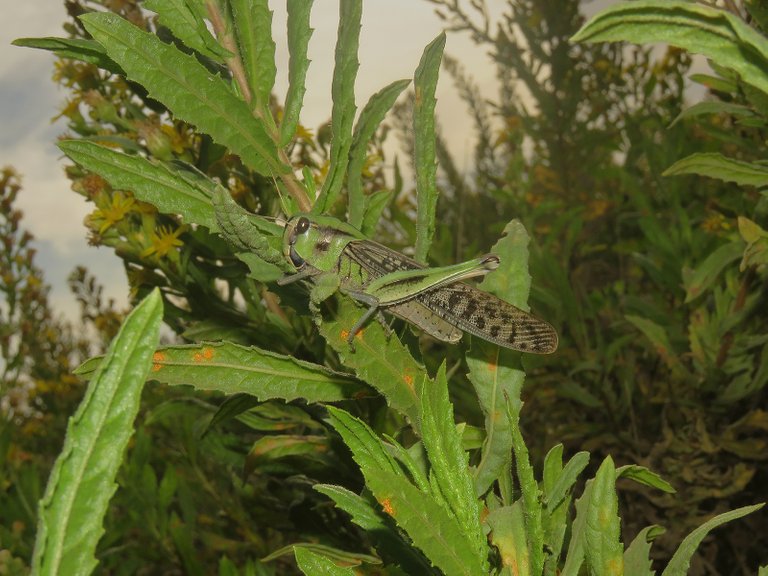
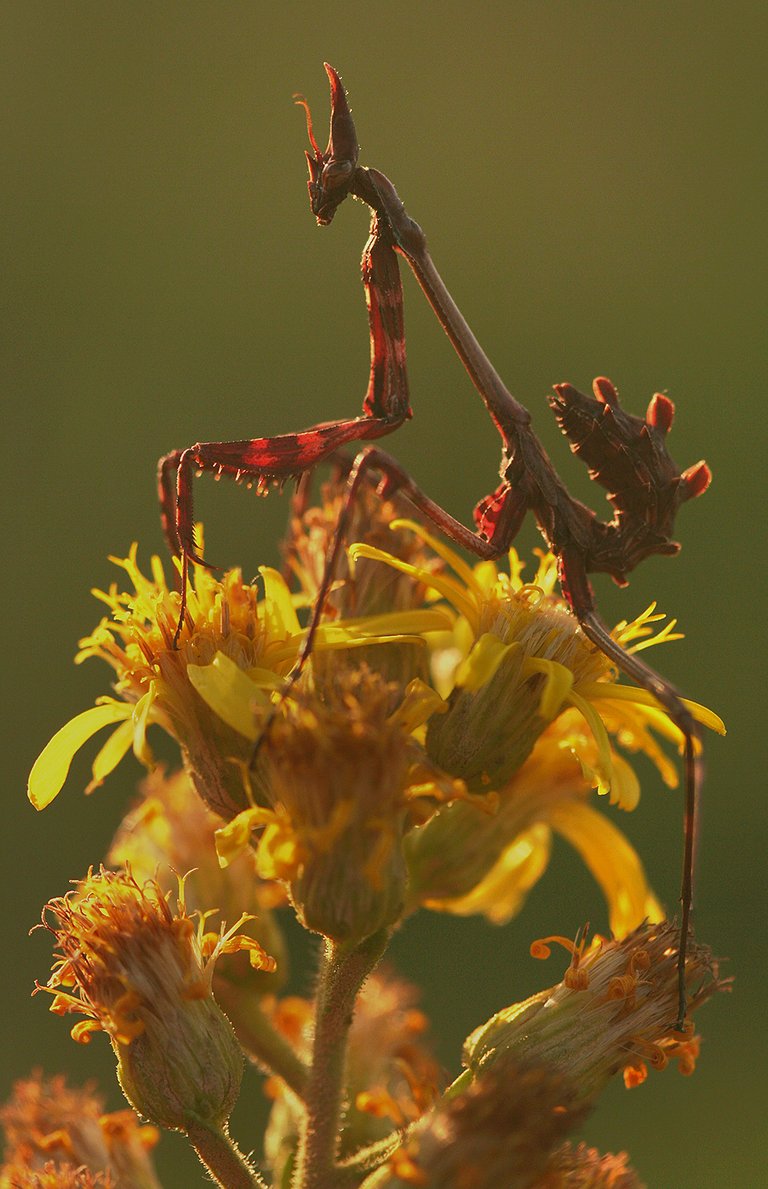

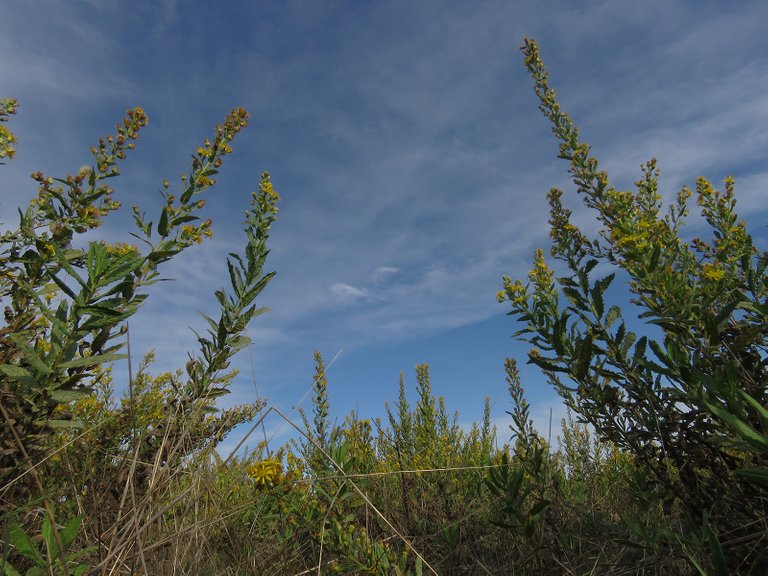
What a lovely autumn journey -- in the springtime!
🙂
Wow. all the photos that you show are very beautiful and perfect. Extraordinary
What a lovely photography 😍
I was amazed by every picture.You are a very good photographer.
Wao another amazing and informative Post by you. Autumn photography is awesome. As it comes into the spring, such things come out. All these pictures looks so clean and beautiful. Thanks for sharing.
Lovely shots
green insects are like chameleons, so if we don't pay attention they look like green leaves
Small objects will look more perfect when the camera lens approaches them.
Amazing 🐜🐜
https://twitter.com/1384554105465491461/status/1644424132078239745
https://twitter.com/848181438339874821/status/1644849764029308929
https://twitter.com/769148982161448961/status/1644857765297553409
https://twitter.com/1884771912/status/1644900472694743040
The rewards earned on this comment will go directly to the people( @xoxois, @askari, @abdulmananakmal, @shiftrox ) sharing the post on Twitter as long as they are registered with @poshtoken. Sign up at https://hiveposh.com.
A good old insect post!! I love these. I absolutely adore grasshoppers.
Great photos 😁
!LUV
@borjan, @misshugo(1/1) sent you LUV. | tools | discord | community | HiveWiki |
HiveWiki |  NFT | <>< daily
NFT | <>< daily
I love seeing butterflies and bees in my Garden, they remind me of last Summer. I look forward to warmer weather here in the UK! !PIMP !LOLZ !PGM
You must be killin' it out here!
@fun.farms just slapped you with 5.000 PIMP, @borjan.
You earned 5.000 PIMP for the strong hand.
They're getting a workout and slapped 2/2 possible people today.
Read about some PIMP Shit or Look for the PIMP District
lolztoken.com
Total snooze fest.
Credit: reddit
@borjan, I sent you an $LOLZ on behalf of @fun.farms
(3/10)
Are You Ready for some $FUN? Learn about LOLZ's new FUN tribe!
BUY AND STAKE THE PGM TO SEND A LOT OF TOKENS!
The tokens that the command sends are: 0.1 PGM-0.1 LVL-0.1 THGAMING-0.05 DEC-15 SBT-1 STARBITS-[0.00000001 BTC (SWAP.BTC) only if you have 2500 PGM in stake or more ]
5000 PGM IN STAKE = 2x rewards!
Discord
Support the curation account @ pgm-curator with a delegation 10 HP - 50 HP - 100 HP - 500 HP - 1000 HP
Get potential votes from @ pgm-curator by paying in PGM, here is a guide
I'm a bot, if you want a hand ask @ zottone444
I have always love the way you take these beautiful pictures and if I may ask to you go close to them or you captures the insect most especially from far.
Fantastic photos, especially those macros of orthopterans that seem to be able to jump out of the photo at any moment!... Aw... And that wonderful hawk-moth!... What a commendable photo, I know they are very fast and nervous!... Here we have similar species and I have never been able to take pictures of them... Excellent post!... Applause and thanks for sharing my friend!
!discovery 35
!VSC
!BBH
!PIZZA
@jlinaresp has sent VSC to @borjan
This post was rewarded with 0.1 VSC to support your work.
Join our photography communityVisual Shots
Check here to view or trade VSC Tokens
Be part of our Curation Trail
@jlinaresp ha enviado VSC a @borjan
Éste post fue recompensado con 0.1 VSC para apoyar tu trabajo.
Únete a nuestra comunidad de fotografía Visual Shots
Consulte aquí para ver o intercambiar VSC Tokens
Se parte de nuestro Trail de Curación
This post was shared and voted inside the discord by the curators team of discovery-it
Join our Community and follow our Curation Trail
Discovery-it is also a Witness, vote for us here
Delegate to us for passive income. Check our 80% fee-back Program
$PIZZA slices delivered:
@jlinaresp(7/10) tipped @borjan
This is a really big cricket. I wouldn't call them cute because of my childhood traumas, but they sure look majestic. And it really is one of the largest of its kind. I know some of these photos are macro, but they are still big.
Muy interesante 👍 tu contenido yo siempre me preguntaba como haces para darle nombre a cada planta y cada insecto, osea como sabes cual es su nombre? Saludos amigo
Having observed insects closely, discovered many insect characteristics and behaviors that amaze people. It's really a new world. I admire your photography skills
Wow - these pics are just awesome. You have quite different insects to us here in the UK. Our crickets and grasshoppers are quite small, and are few in number - I hear them, but rarely see them. That large cricket is crazy ! Never seen anyone near that size before. And I love the humming bird - they are awesome - we dont have those here ! And again, my fav - the mantis !!! I love your pics of mantis - they are brilliant - what fantastic insects !
!ALIVE
!LUV
!PGM
@borjan, @hoosie(2/5) sent you LUV. | tools | discord | community | HiveWiki |
HiveWiki |  NFT | <>< daily
NFT | <>< daily
@borjan! You Are Alive so I just staked 0.1 $ALIVE to your account on behalf of @hoosie. (3/10)
The tip has been paid for by the We Are Alive Tribe through the earnings on @alive.chat, feel free to swing by our daily chat any time you want.

BUY AND STAKE THE PGM TO SEND A LOT OF TOKENS!
The tokens that the command sends are: 0.1 PGM-0.1 LVL-0.1 THGAMING-0.05 DEC-15 SBT-1 STARBITS-[0.00000001 BTC (SWAP.BTC) only if you have 2500 PGM in stake or more ]
5000 PGM IN STAKE = 2x rewards!
Discord
Support the curation account @ pgm-curator with a delegation 10 HP - 50 HP - 100 HP - 500 HP - 1000 HP
Get potential votes from @ pgm-curator by paying in PGM, here is a guide
I'm a bot, if you want a hand ask @ zottone444
Thanks. 🙂 Glad you like the post. I usually feel the same when I see insect photographs published by people that live in tropical parts of the world. Their insects are even bigger, more colorful, and the biodiversity there is crazy. 😃 Hope that one day I'll be able to spend a month or two photographing insects and plants in one of those places.
You love to post about insects. I guess you are an insect lover. Hahaha
The pictures are very beautiful
The second photo of the bushcricket, I liked the way the eye was. Looked like it was in bliss chewing that leaf. The Saga pedo bushcricket, the last photo, I liked the designs on the thorax. The Empusa pennata nymph sure is a bizarre looking insect! The Phlogophora meticulosa moth is very different in looks.
"Decticus albifrons, commonly known as the Mediterranean wart biter." What an odd name for a bushcricket!
Lots of cool insects in this post!
a photo with such perfect results sir @borjan
Congratulations, your post has been upvoted by @dsc-r2cornell, which is the curating account for @R2cornell's Discord Community.
Wow brother , what a photography, Dittrichia viscosa is totally hide with leaf and if we seen carefully so we can find it.
They all have such interesting different eyes! This could be a good topic for a post!!
My optics on the action camera does not allow me to take such detailed macro shots. Although the insects themselves turn out to be so tolerable))